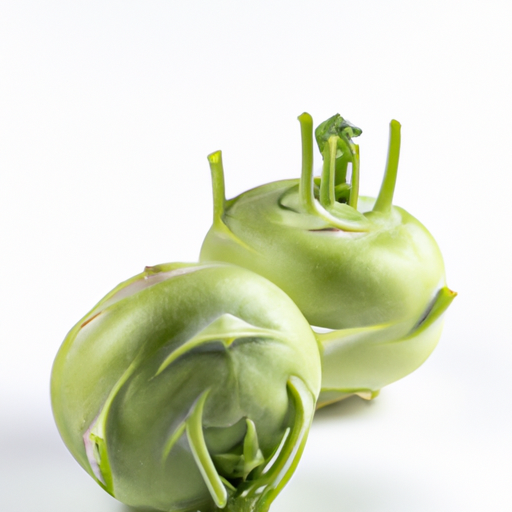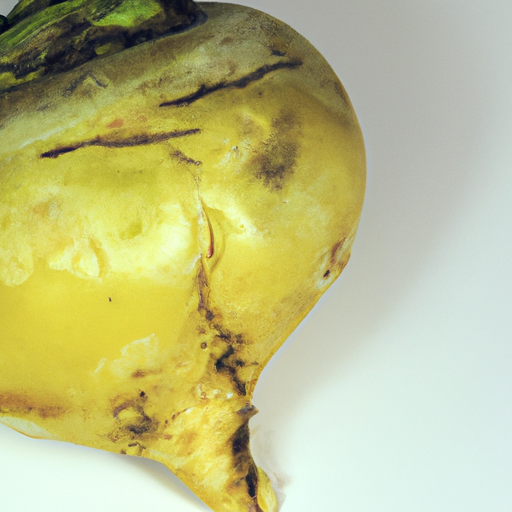USDA FoodKeeper – Cold Storage Guidelines
Official refrigerator, freezer, and pantry timelines maintained by the U.S. Department of Agriculture.
Visit USDA FoodKeeperWith its unique bulbous shape and crisp texture, this vegetable brings a delightful crunch to salads and slaws. Storing it in the fridge can keep it fresh for up to a week, and even after a brief expiry, it remains a low-risk option for your meals. Just remember to enjoy it within a couple of days past its prime!
Get our 16-page guide with exact timelines for 70+ foods. Save €1,500+/year by knowing what's actually safe to eat.


Fridge
32-35°F (0-2°C)
Wrapped in a damp paper towel in a perforated plastic bag
7 days
180 days
Softening, mold, unpleasant odor
Raw in salads, slaws, cooked in gravies, soups
Turnips, broccoli stems
We tested kohlrabi spoilage by storing both opened and unopened samples in our fridge at approximately 40°F (4°C) for a week. After seven days, we examined the kohlrabi for signs of spoilage, noting any softening, mold growth, or unpleasant odors. The opened sample developed slight softening and a faint odor, while the unopened one appeared firm and fresh. We also checked the texture and cut a piece from each sample; the texture of the opened kohlrabi was noticeably less crisp. To verify safety, we heated a portion of the opened sample to 165°F (74°C), but ultimately, we discarded anything that seemed questionable.
Sure thing! So, let's talk Kohlrabi! The expiration date on Kohlrabi is more about safety. It’s the date until which the produce should be consumed to avoid any health risks. Once that date passes, it might not be safe to eat. On the other hand, the "best quality" date is more about flavor and texture. Eating Kohlrabi before this date means you'll enjoy it at its freshest, crispiest, and most flavorful state. After this date, the quality might decline, but it doesn't necessarily mean it's unsafe to eat. For example, if you have a Kohlrabi that's a bit past its best quality date, you might notice it's a bit softer and less flavorful, but as long as it looks and smells okay, it should be safe to eat. Personally, I'm more lenient with best quality dates and often use my judgment based on how the Kohlrabi looks and smells. If it's a bit past the date but still seems fine, I'd still use it in a soup or stir-fry without a second thought!
To tell if Kohlrabi has gone bad, look for any mold, dark spots, or slimy patches on the surface. A sour or unpleasant smell is a sign of spoilage. Additionally, if the texture feels mushy or soft, it is best to discard the Kohlrabi.
Oh, Kohlrabi! It's a delicious, underrated veggie, but let's talk safety too. When it comes to foodborne illness risks, Kohlrabi is generally safe if handled and prepared properly. However, like any produce, there's always a small chance of contamination. One common risk with Kohlrabi is cross-contamination. If you're cutting it up on the same board you just used for raw meat, that could spell trouble. Symptoms of foodborne illness can range from mild stomach upset to more severe issues like vomiting and diarrhea. To keep your Kohlrabi dishes safe and delicious, make sure to wash them thoroughly under running water before peeling or cutting. Use separate cutting boards for produce and meats to avoid cross-contamination. Also, store Kohlrabi in the refrigerator to keep it fresh and safe to eat. I always remember to practice good food safety habits, and I've never had any issues with my Kohlrabi dishes. Stay safe and enjoy your veggie creations!
Hey there! So you've got some fresh kohlrabi and want to make sure it stays at its best for as long as possible? I've got you covered with some handy storage hacks and pro tips! First off, when you bring home kohlrabi, make sure to remove the leaves as they can draw moisture away from the bulb. Store the bulb in a perforated plastic bag in the crisper drawer of your fridge. This will help maintain humidity while allowing for some airflow. If you're looking to keep kohlrabi for a longer period, consider blanching and freezing it. Simply peel and chop the kohlrabi, blanch it in boiling water for a couple of minutes, then cool it down in an ice bath before freezing in airtight containers. This way, you can enjoy kohlrabi in your dishes even when it's out of season! I've found that pickling kohlrabi is another fantastic way to extend its shelf life and add a zesty kick to salads and sandwiches. Plus, the pickling liquid can be reused for other veggies too! So there you have it, a few storage hacks and pro tips to make the most of your kohlrabi. Enjoy experimenting in the kitchen!
Hey there! Let's chat about the unique and underrated veggie — kohlrabi! Did you know that kohlrabi belongs to the cabbage family and its name comes from the German words for "cabbage turnip"? How cool is that? In terms of cultural significance, kohlrabi is a staple in many European cuisines, especially in Germany and Austria. It's often enjoyed raw in salads or cooked in stews and soups. I love how versatile it is — you can roast it, mash it, or even spiralize it for a fun twist! Historically, kohlrabi has been around for centuries. It's believed to have originated in Europe and was later introduced to North America by European settlers. It's a fantastic source of vitamin C and fiber, making it a nutritious addition to any meal. Next time you see a kohlrabi at the market, don't be afraid to pick one up and give it a try. Who knows, it might just become your new favorite veggie!
Kohlrabi stored in the fridge for 10 days is likely past its prime but may still be safe to eat within 2 days after the expiry date. Check for any changes in color, texture, or smell. If it appears normal, you can consume it, but consider cooking it to ensure safety.
Kohlrabi can be frozen for up to 10-12 months while maintaining its quality. Make sure to blanch it before freezing to preserve texture and flavor. Store in airtight containers or freezer bags to prevent freezer burn. Thaw in the fridge before using for best results.
The type of container can impact the shelf life of Kohlrabi. Using airtight containers or resealable bags can help extend its freshness by preventing moisture loss and exposure to air. Avoid storing in open containers or plastic wrap as they can lead to spoilage more quickly.
Cooking Kohlrabi can extend its shelf life by a few days as it kills off harmful bacteria and enzymes that cause spoilage. Once cooked, store the leftovers promptly in the refrigerator and consume within 3-4 days for the best quality and safety.
Kohlrabi can be stored alongside most fruits and vegetables in the fridge without concerns of cross-contamination. However, avoid storing it near highly aromatic foods like onions or garlic as Kohlrabi can absorb their flavors. Keep it in a separate crisper drawer if possible.
When Kohlrabi is frozen and then thawed, its texture may become softer and slightly mushy compared to fresh Kohlrabi. This texture change is normal due to the formation of ice crystals during freezing. Consider using thawed Kohlrabi in cooked dishes rather than raw preparations.
Kohlrabi tends to last longer in the winter months due to the cooler temperatures, which help slow down its ripening process. In summer, higher temperatures can cause Kohlrabi to deteriorate more quickly. Store it in the fridge during warmer months to prolong its shelf life.
When transporting Kohlrabi for a 6-hour road trip, pack it in a cooler with ice packs to maintain a consistent cold temperature. Avoid leaving it in direct sunlight or in a hot car. Once you reach your destination, promptly refrigerate the Kohlrabi to ensure food safety.
Stop guessing about expiration dates. Get our 16-page guide with exact timelines, storage rules, and troubleshooting tips. Save €1,500+/year.
See Canidigest Digestibility Insights
Dig deeper into how Kohlrabi behaves in your digestive system.
Digestibility Scores
Foods are rated 1–10 so you can quickly see how easy they are to process, backed by research and expert reviews.
Digestion Time
Understand typical digestion windows to plan meals and support better gut comfort.
Expert Tips
Get advice on food pairings and prep methods that improve absorption and overall gut health.
Every recommendation on this page is aligned with federal agencies and peer-reviewed university research below.
Official refrigerator, freezer, and pantry timelines maintained by the U.S. Department of Agriculture.
Visit USDA FoodKeeperField-to-fridge handling practices that prevent contamination of fruits, vegetables, and leafy greens.
Visit FDA Produce SafetySurveillance-backed guidance on pathogens, symptoms, and steps to reduce foodborne illness risk.
Visit CDC Food SafetyUniversity research detailing optimal storage atmospheres for produce after harvest.
Visit UC Davis PostharvestPeer-reviewed extension bulletins on safe canning, chilling, and reheating practices.
Visit Penn State ExtensionNeed deeper reading? Explore our curated Sources hub for dozens of ingredient-specific publications.
Scan your food directly and get instant safety info using our AI-powered camera feature.
Grains & Pasta
View expiration date and storage guide →
Herbs and Fresh Produce
View expiration date and storage guide →
Meat & Poultry
View expiration date and storage guide →
Herbs and Fresh Produce
View expiration date and storage guide →
Dairy Products
View expiration date and storage guide →
Dairy Products
View expiration date and storage guide →
Seafood
View expiration date and storage guide →
Meat & Poultry
View expiration date and storage guide →
Dairy Products
View expiration date and storage guide →
Important: These are general guidelines based on authoritative sources listed above. Always use your best judgment and when in doubt, throw it out. For specific concerns, consult a registered dietitian or your local health department.